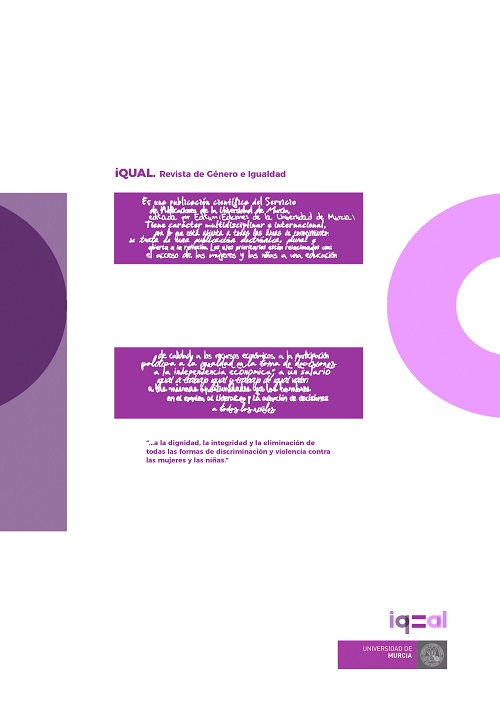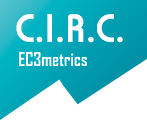La compleja relación entre género, lengua, dominancia e identidad: Conversación mixta y entre personas del mismo sexo en lo privado, lo público y más allá
Abstract
Both empirical and anecdotal evidence suggests that there is an intricate relationship between gender and language. This can be analyzed from a number of different―yet complementary―perspectives. As early as the 1980s, research articles can be found that explore the way in which gender, power, and dominance interact in mixed-sex talk (West & Zimmerman, 1983; DeFrancisco, 1991; Herring et al., 1992). Complementarily, the complex relationship between gender and language has been approached from a same-sex talk perspective, both in female-only (Coates, 1989) and male-only settings (DeCapua & Boxer, 1999; Cameron, 1997). Beyond the private domain, women’s talk has been studied within the specific―and of utmost interest―framework provided by the public sphere (Reynolds, 1991; Holmes & Schnurr, 2006). In more recent times, sexuality has been added to the combination in an attempt to obtain a bigger―and clearer―picture (Abe, 2004; Hall, 2009; Leap, 2008). Some scholars have even traveled the extra mile by providing insightful approaches to the relationship between gender, language, and identity by establishing explicit connections between these concepts and related cultural practices (relevantly to this topic, Boxer & Gritsenko (2005) compare how women in the US and Russia tackle the surname issue when faced with marriage or partnership).
Downloads
-
Abstract392
-
pdf125
References
Abe, H. (2004). Lesbian bar talk in Shinjuku, Tokyo. Gender and Language: A Reader, 2nd edi-tion (Coates, J., & Pichler, P. (eds.)), pp. 57-70. Oxford: Blackwell, 2011.
Boxer, D., & Gritsenko, E. (2005). Women and surnames across cultures: Reconstituting identi-ty in marriage. Women and Language, 28 (2), pp. 1-11.
Cameron, D. (1997). Performing gender identity: Young men’s talk and the construction of heterosexual masculinity. Gender and
Language: A Reader, 2nd edition (Coates, J., & Pichler, P. (eds.)), pp. 57-70. Oxford: Blackwell, 2011.
Cameron, D.: https://debuk.wordpress.com.
Jun 16, 2019: Verbal hygiene for men
Oct 4, 2019: Bullshit: The struggle goes on
Oct 31, 2019: Out of humour
Nov 10, 2019: The spinster returns
Nov 24, 2019: Marie and Fiona go to Washington
Coates, J. (1989). Gossip revisited: Language in all-female groups. Gender and Language: A Reader, 2nd edition (Coates, J., &
Pichler, P. (eds.)), pp. 57-70. Oxford: Blackwell, 2011.
DeCapua, A., & Boxer, D. (1999). Bragging, boasting and bravado: Male banter in a brokerage house. Women and Language, 22 (21), pp. 5-22.
DeFrancisco, V. L. (1991). The sounds of silence: How men silence women in marital relations. Gender and Language: A Reader, 2nd edition (Coates, J., & Pichler, P. (eds.)), pp. 57-70. Oxford: Blackwell, 2011.
Hall, K. (2009). Boys’ talk: Hindi, moustaches and masculinity in New Delhi. Gender and Lan-guage: A Reader, 2nd edition (Coates, J., & Pichler, P. (eds.)), pp. 57-70. Oxford: Blackwell, 2011.
Herring, S. C., Johnson, D. A., & DiBenedetto, T. (1992). Gender and Language: A Reader, 2nd edition (Coates, J., & Pichler, P. (eds.)), pp. 57-70. Oxford: Blackwell, 2011.
Holmes, J., & Schnurr, S. (2006). Gender and Language: A Reader, 2nd edition (Coates, J., & Pichler, P. (eds.)), pp. 57-70. Oxford: Blackwell, 2011.
Leap, W. L. (2008). Queering gay men’s English. Gender and Language: A Reader, 2nd edition (Coates, J., & Pichler, P. (eds.)), pp. 57-70. Oxford: Blackwell, 2011.
Reynolds, K. A. (1991). Female speakers of Japanese in transition. Gender and Language: A Reader, 2nd edition (Coates, J., & Pichler, P. (eds.)), pp. 57-70. Oxford: Blackwell, 2011.
West, C., & Zimmerman, D. H. (1983). Women’s place in everyday talk: Reflections on parent-child interaction. Gender and Language: A Reader, 2nd edition (Coates, J., & Pichler, P. (eds.)), pp. 57-70. Oxford: Blackwell, 2011.
Copyright (c) 2024 Servicio de Publicaciones Universidad de Murcia

This work is licensed under a Creative Commons Attribution-NonCommercial 4.0 International License.








